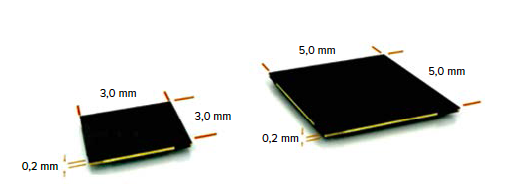› Forums › IoTStack › News (IoTStack) › How IR sensor 2.0 will improve IoT technology
Tagged: IoTPlatform_H10, Sensors_H2, Tech_G15
- This topic has 1 voice and 0 replies.
-
AuthorPosts
-
-
October 13, 2018 at 5:04 am #25606
The next generation IR sensor 2.0 will be more flexible, much thinner and cheaper to manufacture than old sensors. This opens up for a big improvement and more areas of use within IoT.
The development of IoT and connected services has undergone an extremely rapid development. Going back only 10 to 15 years, few could even imagine how many services that would be connected by different products and solutions, through this somewhat obscure three letter combination of IoT, says Robert Ekström, CEO of JonDeTech.
Today, IoT is an established expression being labelled on all different gadgets and industrial products, surrounding our daily life. The world of IoT is here to stay. In the future, it can be said that anything that can be connected will be connected. Is there a customer benefit tied to it, it will most likely happen. And sensors play a vital role in this process. Sensors convert physical input into digital signals, which can then be stored for access and analysis – especially if the sensors are cheap and small.
Small, cheap and flexible sensors can be a driver of IoT

Fact is that management consulting behemoth McKinsey lists particularly cheap and small efficient sensors as one of the most important factors for the growth of Internet of Things. But why do McKinsey point out the small sensor as a key driver for the IoT development? Is this really new? Someone might even say that sensors have been used before, in for instance cell phones?
And that is correct, integrating a temperature sensor into a mobile phone is not a new invention. It is an IoT solution that has been done in the past. But integrating, for instance, a traditional temperature sensor in a cell phone had its challenges since the traditional sensor could only be used to measure the temperature by contact, with the result that the temperature measurement by contact provided an incorrect measurement when it was being removed from the pocket since it takes some time for the phone to adapt to ambient temperature. With the IR sensor 2.0, on the other hand, built on nanotechnology, you can develop and integrate a small sensor using contactless temperature measurement in smart phones. How is that possible?
Improved thermopile sensor key to IoT improvement
One of the key components for improving IoT solutions is the thermophile sensor. The thermopile can most easily be described as a series of connected thermo couples that can convert thermal energy into electrical energy. However, the size and manufacturing cost of the first generations thermopiles have limited the application areas.
But with the assistance of the new generation of IR sensors, it can now also be used for the contactless measurement of as well temperature, relative temperature and heat flow, as well as presence detection. This new sort of thermopile can be of use for several commercial IoT applications such as flame and fire detection, motion, absolute temperature measurements, heat measurement and control of heat sensitive parts and plumbing.
But that is not all. These new and advanced thermopile sensors can also measure heat flows and have a time constant describing how fast it reacts to the value change. These sensors are made with nanotechnology in a plastic matrix, and are constructed in three different layers, where the most important layer is thermopile layer.
-
-
AuthorPosts
- You must be logged in to reply to this topic.
